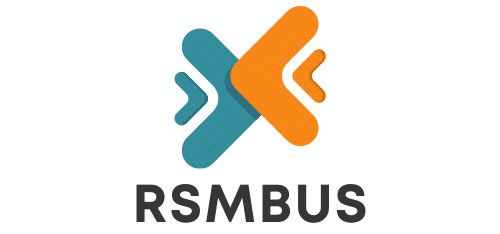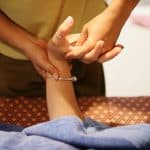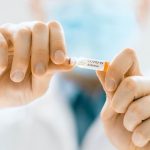Brachycephalic Airway Obstructive Syndrome (BOAS) is a health concern that affects certain breeds of dogs, particularly those with short noses, like pugs. Despite their unique, adorable appearance, their flat faces might lead to serious health issues, such as breathing difficulties, especially during exercise. As a responsible pet owner, it’s crucial to understand this issue and learn the safest strategies for exercising a pug with brachycephalic syndrome. This article aims to provide valuable information on how to keep your beloved short-nosed pet happy, healthy, and active.
Understanding Brachycephalic Syndrome
Before we delve into the best ways to exercise your pug, let’s take a moment to understand what brachycephalic syndrome is. The term "brachycephalic" describes the short, stubby skull shape seen in breeds like pugs, bulldogs, and Persian cats. Brachycephalic Airway Syndrome consists of several physical traits which may inhibit a dog’s ability to breathe normally and lead to other health issues.
Avez-vous vu cela : How to Implement a Structured Play Schedule for a Highly Active Australian Shepherd?
Breathing problems associated with this syndrome include stenotic nares (narrow nostrils), an elongated soft palate, and everted laryngeal saccules. All these issues narrow the airway, making it harder for these dogs to take in air, particularly during exercise or in hot weather.
According to a study available in Google Scholar, brachycephalic breeds, particularly pugs, have a higher risk of developing BOAS. This risk increases with age and weight. Therefore, it’s crucial to ensure your pet maintains a healthy weight and gets regular check-ups at the vet.
A lire aussi : What Are the Best Techniques for Teaching a Visually Impaired Dog to Navigate Home?
Safe Exercise Techniques for Pugs with BOAS
Developing a safe and effective exercise routine for your pug with BOAS is paramount to its overall health and well-being. A regular exercise routine not only helps in maintaining a healthy weight, but it also improves cardiovascular health and reduces the risk of various diseases.
Avoid exercising your pet during the hottest parts of the day since brachycephalic breeds are more sensitive to heat. Instead, opt for early morning or late evening exercise when the temperatures are cooler.
Keep your exercise sessions short, about 15-20 minutes, and try to maintain a moderate pace. Remember, your pug doesn’t need to run marathons to stay healthy. Even a leisurely walk around the block can be beneficial.
Always let your pug dictate the pace of the workout. If they want to stop and sniff something, let them. It’s not just about physical exercise; mental stimulation is crucial too.
Recognizing Signs of Distress
It’s vital to recognize the signs of distress in a brachycephalic dog during exercise. If your pet shows signs of difficulty breathing, such as excessive panting, foaming at the mouth, or a blue tongue, stop the exercise immediately and let them rest.
Other symptoms of distress include coughing, gagging, vomiting, and collapse. If your pug displays any of these signs during or after exercise, seek immediate veterinary attention.
When Exercise Is Not Enough: Surgical Options
While exercise and a healthy diet can significantly improve the quality of life for a pug with BOAS, in severe cases, surgery may be necessary. Surgical procedures for BOAS aim to widen the airway and make breathing easier. Options include nostril widening, soft palate resection, and removing everted laryngeal saccules.
These surgeries can significantly improve your pet’s quality of life, but they are not without risks. It’s essential to have a thorough discussion with your vet about the potential benefits and risks before opting for surgery.
The Role of Diet in Managing BOAS
The importance of a balanced diet cannot be overstated when managing BOAS in pugs. Overweight pets are generally more prone to health issues, and for brachycephalic breeds, the risks are even higher.
A nutritious, balanced diet can help maintain a healthy weight in your pug, which can significantly improve breathing problems associated with BOAS. Avoid feeding your pet table scraps or fatty foods. Instead, opt for a diet specifically formulated for small breeds.
Regular vet check-ups are crucial for weight management. Your vet can provide personalized feeding guidelines based on your pet’s weight, age, and overall health. Regular monitoring of your pet’s weight can help you make necessary adjustments to their diet and exercise routines, ensuring they stay within a healthy range.
In the mission of promoting optimal pet health, ensuring your pug gets safe and adequate exercise is crucial. By understanding their unique needs and limitations due to BOAS, you can make informed decisions and set up an effective exercise plan to keep your pet healthy and happy. Always remember, the ultimate goal is to provide your pet with a quality life filled with love, care, and lots of wagging tails.
Essential Health Maintenance for Pugs with BOAS
To ensure their well-being and longevity, it is crucial to be proactive in the health maintenance of pugs with Brachycephalic Airway Obstructive Syndrome (BOAS). This includes regular vet visits, vaccinations, heartworm prevention, and dental care.
Vet check-ups should be more frequent for brachycephalic dogs compared to other breeds due to their predisposition to numerous health issues. Routine veterinary assessments can help detect any developing problems early, thus ensuring prompt and effective treatment. A vet can check for stenotic nares, an elongated soft palate, and other signs of airway obstruction. It is recommended to have your pug examined at least twice a year, or as suggested by your veterinarian.
Google Scholar has several references emphasizing the importance of vaccinations for pugs with BOAS. These vaccinations can protect your pet from a variety of diseases, some of which can exacerbate their breathing difficulties.
Heartworm prevention is another crucial aspect of health maintenance for pugs with BOAS. Heartworm disease can lead to severe lung disease and heart failure, making it a significant threat to dogs with already compromised respiratory systems.
Dental care is often overlooked but is equally vital. Dental disease can lead to severe pain, tooth loss, and infections that can spread to the heart, kidneys, and other organs. Regular dental check-ups, teeth cleaning, and a proper diet can help prevent these issues.
Most importantly, consider pet insurance as medical expenses can add up quickly, particularly for breeds predisposed to certain health conditions, like pugs. Pet insurance can help cover the costs of regular vet visits, surgeries, and other treatments.
Conclusion: Creating a Healthy Lifestyle for Pugs with BOAS
Caring for a pug with Brachycephalic Airway Obstructive Syndrome (BOAS) involves understanding the syndrome, managing their diet, ensuring they get safe exercise, recognizing signs of distress, and maintaining their overall health. While the challenges may seem daunting, remember that the goal is to provide your pet with a high quality of life.
According to research available on PubMed and Google Scholar, brachycephalic breeds like pugs can live fulfilling lives when their unique needs are met with mindful care. Remember, every pug is different. What works for one might not work for another. Therefore, it is important to develop a personalized care plan in consultation with your vet.
Finally, always remember that your love, care, and attention are the most significant factors in your pug’s life. Your pug does not see itself as suffering from a syndrome.
All they know is they have a loving family who cares for them. With the right strategies, informed by research and guided by professionals, you can ensure that your pug with BOAS remains a healthy, active, and vital part of your life.
As your pug navigates its life with BOAS, the wagging of its tail will remind you that happiness is found in the simplest of things: a walk in the park, a healthy meal, a brush of the coat, a sensitive and caring touch, and most importantly, the unconditional love between a pet and its owner.











